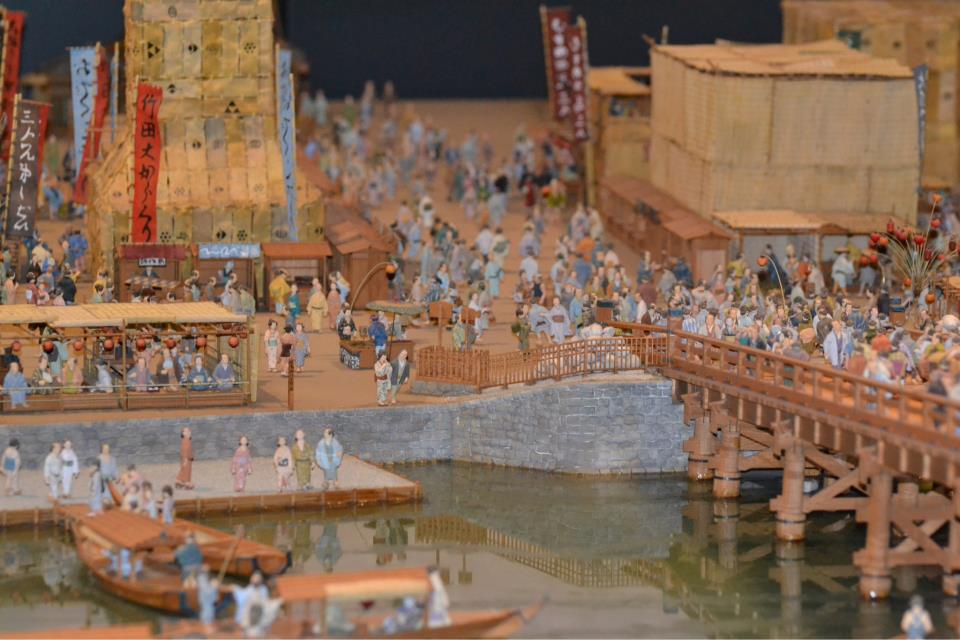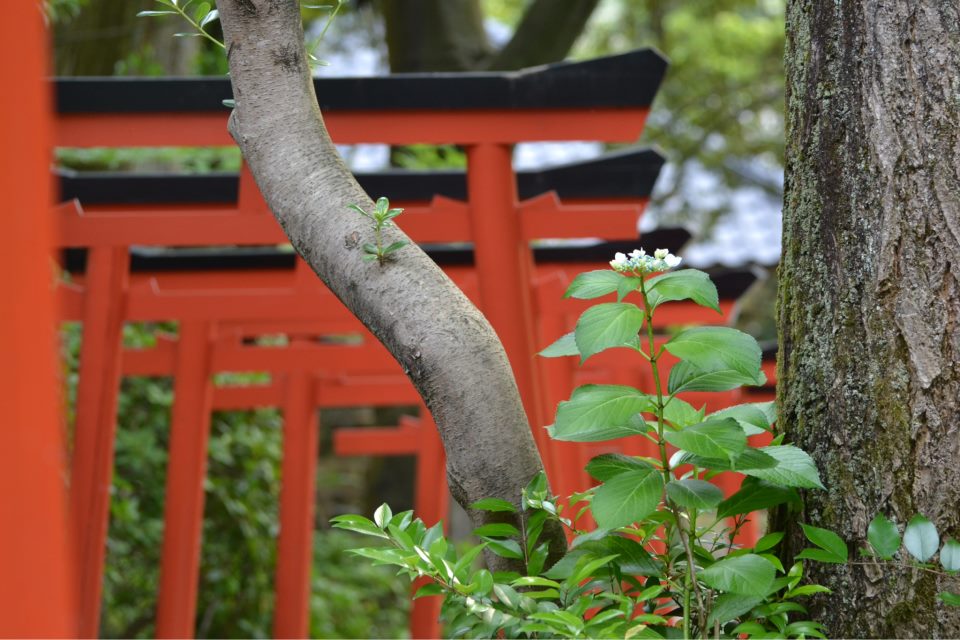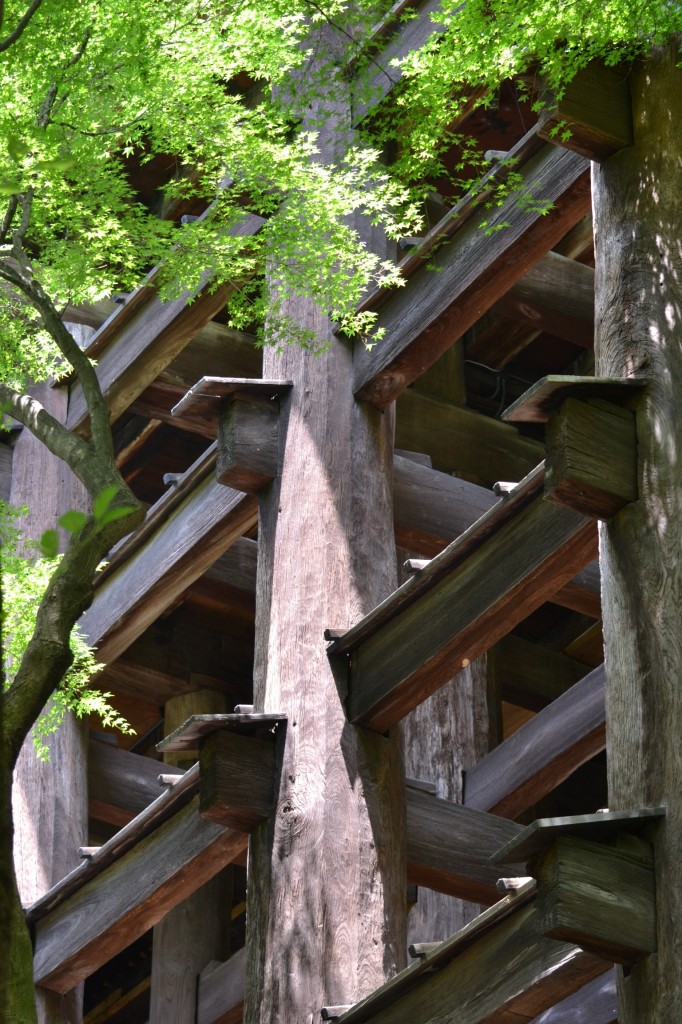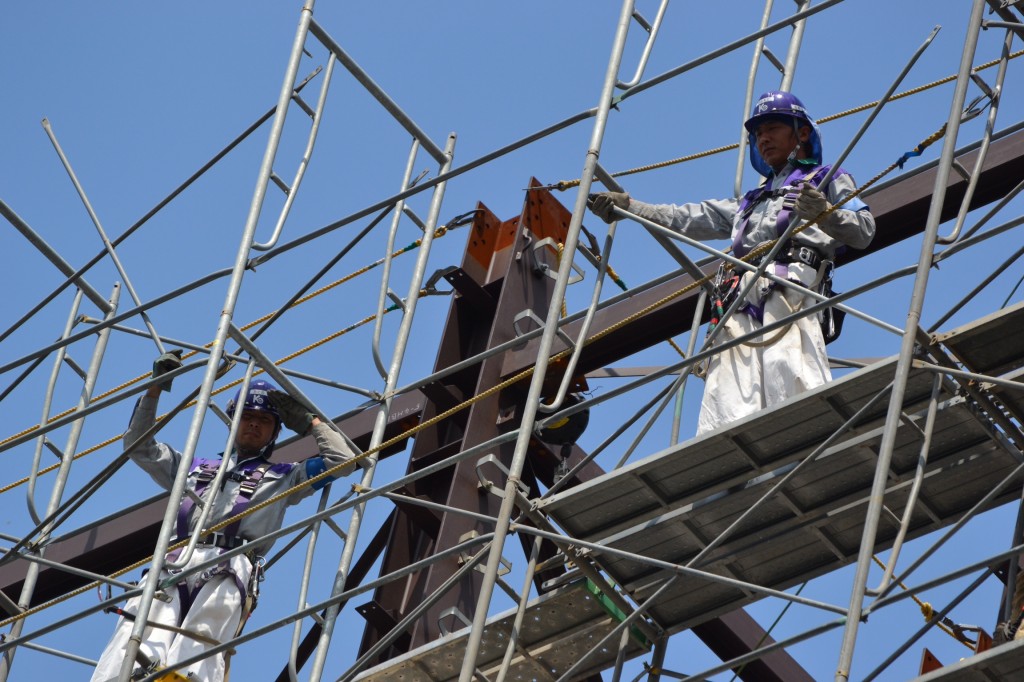One of the hardest things for academic historians to accept is that their characteristic engagement with the past is deeply, arguably inextricably, interwoven with the very particular ways that nations and modernity use history as a tool. E.g., both nations and modern societies as a whole have a very active stake in the maintenance of selected old buildings, historical landmarks, and archives, for slightly divergent reasons. Nations use history as a kind of grout to connect their fragments, cover their gaps, prevent leaks, make a (seeming) whole. Modernity uses history to gloat and reflect about its transcendence over the past: it points to carefully preserved and bracketed-off relics and monuments in ways both melancholy and triumphant.
I was really struck by this familiar point anew while travelling in Japan earlier this month. Again and again, when you read the fine print at various sites, you note that you are seeing a reconstruction of a building that burned. Burned because that’s what urban buildings made of wood regularly did in all premodern societies, including Japan, no matter how exalted or remarkable they were. Burned on purpose, as part of political, religious or military struggles, right into the recent past with World War II bombings. The reconstructions in Japan and elsewhere are often multilayered: Kenrokuen Garden and Kanazawa Castle were built, rebuilt and burned at different moments, by different kinds of regimes and rulers.
It’s a sign of modern and national consciousness’ stake in preservation that when we are made aware of such reconstruction, many of us go looking for the most authentically ancient or “real” artifact or site within a place marked off for its historicity, and discount the most recent reconstruction. Some of that reaction is born from our more intuitive ability to “read” the amendations and sanitizations that recent rebuilders enact when they remake a burnt or destroyed site. But even there we are often only sensitive to the most obvious political or philosophical elisions. Many sites now valued for historical authenticity have invisible infrastructural amendments that make them safe for visitors, which forbid or block access to risky practices commonly associated with the site in the past, or which completely transform the ambient and sensory environment which would have existed in the past.
The hunt for authenticity and the scorn for reconstruction, with all their prickly fetish for materialist accuracy, are part of the same bundle as the drive to preserve and mark off the historical. Reconstruction (and destruction) are the true “authentic” of history, particularly urban history. This isn’t just Japan, but everywhere. Human societies have mostly been like the king of Swamp Castle in Monty Python and the Holy Grail: rebuilders after fire and failure and vandalism.
Somewhat awkwardly at my talk in Japan on digitization, I tried to make a neophyte’s use of the Japanese literary and philosophical concept of mono no aware to suggest that archivists, librarians and scholars should be less avid and obsessive about the need to collect, preserve and migrate the entire flow of information, communication and knowledge through digital spaces. What I think is sometimes misunderstood is that the technical and organizational problem of digital preservation isn’t an automatic result of a vast “information explosion”, it’s a result of the hubristic drive to collect everything, to totalize the archive, the collection, to preemptively and continuously ossify the present for the sake of some future’s ability to know history.
But historical interpretation gains its imaginative force and emotional power from archives, records and ruins that are fragmented by accident, loss and distortion. I’m not saying that I don’t find it frustrating when I can’t find a document that ought to exist, that did exist at some point, but it is my very frustration that drives my work, reminds me that to make sense of people in the past is as much an art as it is a a technical sifting and distillation of fact. Much, I think, as it is in the present.
When preservation loses sight of the value of impermanence, ephemerality, and replacement, when it takes too seriously the grandiosity and overreach of both nation-making and modernity, it becomes a danger both to a richly human understanding of our actually lived past and a piecemeal assassin of the living and changing present, trying to make the material and informational world we inhabit into a stately mortuary. A measure of preservation, unafraid of necessary or pleasing reconstructions and annotations, is a very good thing, but it ought to be guided as much by whimsy and opportunity as by some comprehensive protocol.





One of the jarring experiences I had when I first went to Rome was that I went into what looked on the outside to be beautiful medieval churches only to find that the interior was slathered over with a thick layer of baroque kitsch. Obviously everything in that previous sentence involves my own historical and aesthetic sensibilities. But it got me thinking about the fact that the idea that old buildings should be preserved as they were when they were old is a relatively recent phenomenon in the West — especially in Rome, where they’ve been using ruins as the frames for new buildings, or just as quarries for stone, for about 1500 years. It used to be that when the inside of your 800-year-old church got decript, you would fix it up, using whatever the aesthetic at the time was. Eventually people felt uneasy with that, but that meant they just felt the interior (“left” = tried to meticulously maintain in situ as it inevitably aged) as it was after its last renovation.